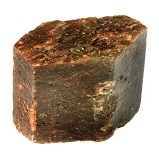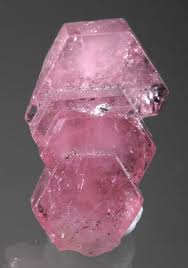
|
| Apatites |

|
| Apatites |
Aloofness and negativity are dissolved by apatite to allow expression of your spiritual and emotional strengths. Apatite is useful when attempting to unify the energies of more than one stone, or emotional, intellectual, physical, and spiritual forms. The development of clairvoyance, clairaudience, clairsentience, and awareness of nature spirits is enhanced by apatite. It has been put to use in contacting extraterrestrial intelligences, enhancing telepathy, and encouraging past life recall.
Apatite, which is found in all the major rock types — igneous, metamorphic, and sedimentary — is actually made up of three distinct minerals. These are Fluorapatite, Chlorapatite, and Hydroxylapatite; the exact proportions of each vary between specimens, but they are almost always present. The vast majority of apatite occurences are as tiny grains spread throughout the parent matrix, but when large crystals form, they can be good enough to be used as gems. These are generally considered to be too soft for regular use in jewelry, however. Apatite has a specific gravity of 3.1 - 3.2, a vitreous to greasy luster, and a white streak.
The influence of the green, brown, red, violet, pink, white and clear stones is dissolving, while pale yellow apatite crystals are resolving. |
||||||||||||||||||||||
 |
This apatite connects to a very high level of spiritual guidance. It facilitates public speaking, enhances group communication, opens the throat chakra, and heals the heart and emotional diseases. |
|||||||||||||||||||||
 |
This apatite is a great eliminator, especially of toxins. It activates the solar plexus and draws off stagnant energy. Yellow apatite treats CFS, lethargy, and depression, and overcomes lack of concentration, inefficient learning, and poor digestion. It removes cellulite and treats the liver, pancreas, gallbladder and spleen. At an emotional level, it neutralizes stored anger. Yellow apatite elixir is an appetite suppressant. | |||||||||||||||||||||
 |